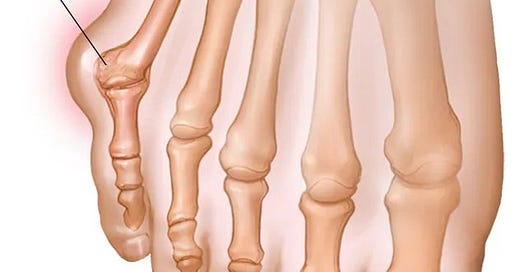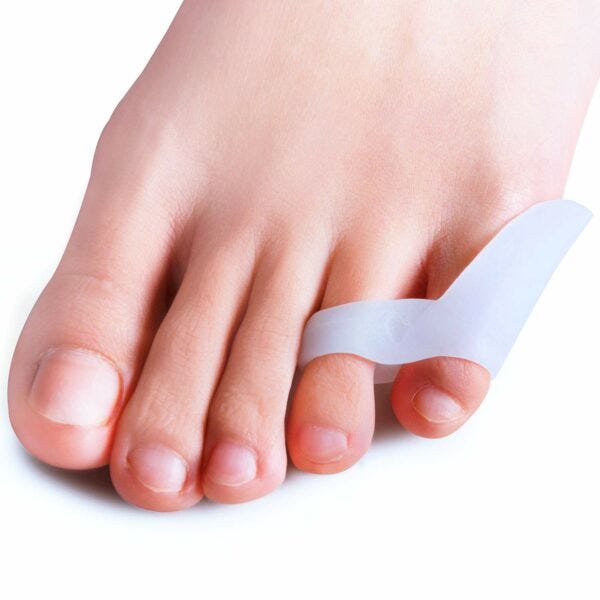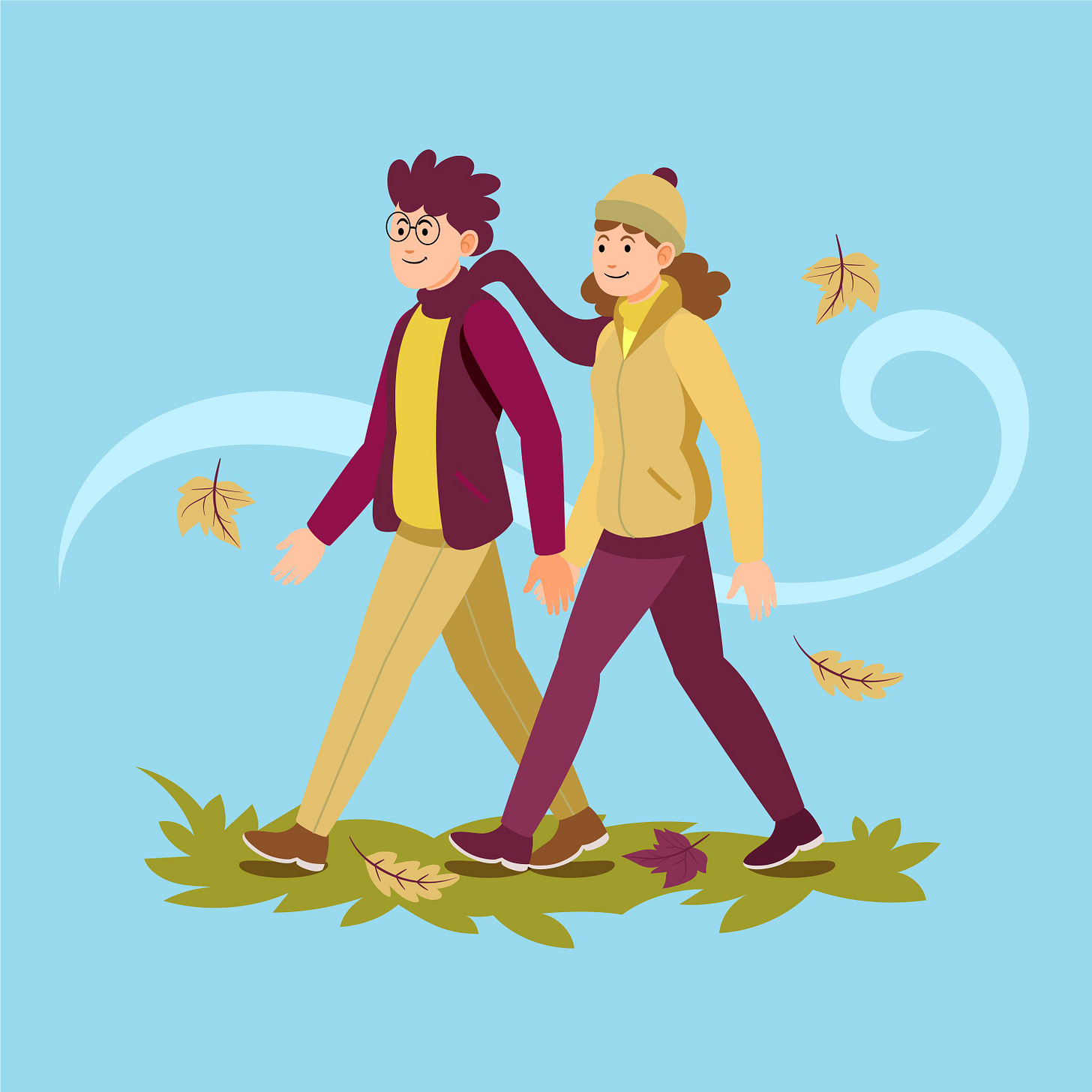Happy Friday friends and readers. A bit lighter fare today, but not if you’ve ever had issues with the little toe at the outer end of your feet. Whether it’s too smushed by the typical shoe choices you make—therefore often numb and mistreated—is broken, sprained, or misshapen—bunioned from excess rubbing—or just always cold—let’s find out more about this part of our anatomy.
The technical term is digitus quintus pedis.
The medical term for your toes is digits. Each one of them has a specific name: The big toe is called the hallux.
Then there are three bones in the middle of your foot, which are called the first, second, and third metatarsals. These bones help connect your foot to your ankle. On each side of these metatarsals are two smaller bones, which are called the fourth and fifth metatarsals.
Finally, at the very end of each foot are five tiny bones that are collectively known as phalanges. The big toe only has two phalanges (one in front and one in back), while each of the other toes has three (a proximal phalanx, an intermediate phalanx, and a distal phalanx).
Now that you know that, does your pinky toe feel better or worse?
Several disorders can befall the smallest of our outermost foundational digit. One is called Tailor’s Bunion. Since it can form on your itsy-bitsyest toe, should it be called a bunionette? Actually yes.
A Tailor’s bunion forms on the outside edge of your toe where it meets the edge of your foot. Typically, at the metatarsophalangeal (MTP) joint. No there wasn’t an unfortunate guy named Tailor that created the nickname, but rather the moniker came out of an entire industry. Tailors used to sit predominantly cross legged for long work sessions, with the outside edges of their feet pressed against the ground or their chair. It was common enough to give it the name.
It’s all about extra pressure on the outside edge of your foot. Symptoms include, swelling, redness, obviously pain, and eventually the toe can be misshapen as it relates to the other toes in the same foot. Causes can include:
—tight shoes that pinch. For women it can often be high heels that crowd and crush the baby toe—but also elevate the entire foot putting added weight and pressure on the already poor alignment. No one likes to be crowded and crushed!
—your foot mechanics as you walk and run.
—standing for too long.
—internally-driven inflammation such as rheumatoid arthritis or lupus.
Certain groups of people are more susceptible to Tailor’s bunions, including females, those with parents who suffered from them—thanks Mom and Dad—and athletes.
My own experience with digit distress indeed came from sports. As a four-season athlete growing up, I’d migrate from Riddell football cleats to Converse Chuck Taylor basketball shoes to Nike track spikes back to baseball cleats in the summer. All of them back in those days lacked the support and comfort of today’s athletic shoes, and the only way to guarantee no slippage or blisters was to often wear two pairs of reversed socks to provide a gnarly tight fit. Shin splints and toe pain were a constant for much of my first 23 years of life—then I started shoving my feet into tightly-buckled Lange ski boots for the next couple of decades—just to add frozen to the pinched, pressured, crowded, and crunched litany of toe trauma.
Living in wild and untended bunion-land can lead to bursitis, hammertoes, and long-term arthritis. Neglect those digits at your own peril!
Despite all my years of beating my feet and toes into athletic submission, there is a condition I have experienced that makes bunions, sprains, and breaks feel like a barefoot walk on the beach. Ladies and gentlemen—that mother of all foot pains is called Gout. Often called the King’s Disease in the old days because they were the ones that could afford rich foods and wine, gout is a metabolic syndrome caused by excess uric acid buildup which dumps crystals into the joints of your extremities. Truly anyone can get gout, but it’s more prevalent in those suffering from diabetes, obesity, high blood pressure, hyperlipidemia—and this was the kicker for me—excess alcohol consumption.
Today my toes rest nicely in high-quality shoes, boots, and sneaks with adequate room and comfortable support. On Cloud anyone? The self-knowledge of those past years of abuse brings a profound gratitude for my ability to arise each morning, stretch those little pink feelers, gently tuck them into their appointed resting place, and go walk a few miles.
As a jazz fan from way back, I fondly remember Michael Frank’s only song that cracked the Billboard 100 in 1976, Popsicle Toes.
No one loves the feeling of our bed partner’s icy digits scraping up against our own toasty metatarsals—or other more intimate body parts—upon entry to the sheets. But what luxury. Franks has a geography bent to his song, writing that:
You got the nicest North America
This sailor ever saw.
I'd like to feel your warm Brazil
And touch your Panama
But Your Tierra del Fuegos
Are nearly always froze.
We gotta see saw
Until we unthaw those
Popsicle toes.
Back to the subject at hand. Toes—especially it seems—pinky toes can be fractured or sprained quite easily. The solutions are many, including changing shoes, ice, rest, and the usual treatments associated with a jilted joint. Banding the pinky toe together with the neighboring digits can often be a quite simple solution.
Can I call bullshit on this foot model? Hello!?! Who has feet that look like that if they’ve lived longer than 8 years of life?
So be nice to your toesies. You need all of them. The standard human gait involves a rolling from lateral to medial. Watch your feet instead of your phone next time you take a walk and notice your own propulsion. Rolling off the heel, through the length of the foot, off the outside—or lateral side—to finally push off the big toe—or medial side.
It’s how we get jiggy with our piggly wigglies.







I owe my old feet a sincere apology. First, they got beat up from years of ballet classes, where I learned to dance on pointe (on the tips of my toes). In those youthful days, my blisters, bunions and bruises were a badge of honor, suffering for the art and all that.
In my adult years, I subjected my feet to tortuous, but great looking high heels. When I began hiking on a regular basis, my feet served me through miles and miles of terrain.
Finally in my late sixties, the ballet and high heel abuse caught up with me and I had a neuroma, surgery with quite a bit of scar tissue removed from one foot. What no one tells you about that procedure is that your pain will be instantly gone, but a cut nerve will cause your toes to curl.
My feet are now gnarled boney platforms that have never let me down, in spite of abuses. I've become familiar with value of regular pedicures, replete with foot massage; toe spreaders, because they help get blood into the area where nerves have been cut from the neuroma surgery; foot stretches; and at last, wide boxed hiking and athletic shoes (I no longer wear high heels) My feet and I have had a good, long run, and I'd like to take this moment to publicly apologize to them for not taking better care earlier in life. And I thank my feet for carrying me onward.
Thanks for a fun, informative piece, Dee. Thanks for the opportunity to tell you and the world that now, I really do love and appreciate my peds!
Foot issues drive aging because as soon as we stop walking we age faster so you're right Dee, we must pay attention to our piggies. Folks think a pedicure is a luxury but that's not always the case because even painful cracks and callouses in our heels can spur us towards aging. This is a great message to help our well-being.